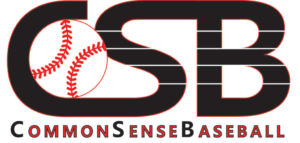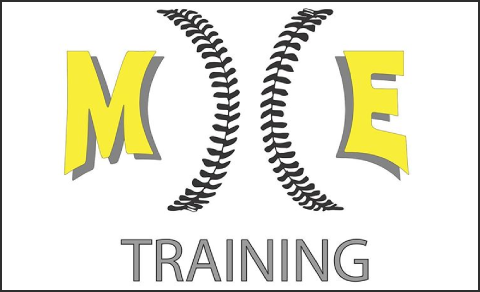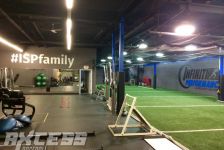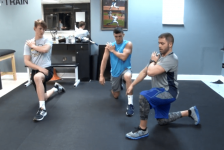Accessing Rotational Power
When studying movement, we can classify three different movement planes: sagittal (front and back), frontal (side to side), and transverse (rotational). Our training should be emphasized on all three planes of movement to optimize overall athletic performance.
However, there’s no surprise that baseball is a very rotational (transverse) sport, with side-to-side (frontal) movement being a close second since the frontal plane precedes rotational movement.
Whether it’s throwing or hitting, an athlete must be able to rotate well to be successful in the game of baseball.

We can assume that being strong is the “end-all-be all”, but an athlete needs to be able to express this maximal force in the shortest time possible (increase rate of force development).

Absolute Strength – Absolute Speed Continuum
For something to be deemed reliable in the field of science, a term/concept must be able to be defined, measured, and evaluated. We can define rotational power relatively well, but is there a way to reliably assess and train for rotational power?
Let’s find out.

To become a Black Diamond call 631-942-2542
Recent Concepts
Popular implements that can be used to train for rotational power include medicine balls, bands, and cable-pulleys [1].
One study [1] concluded that using 9%, 12%, and 15% of bodyweight (BW) on a cable pulley showed a high correlation coefficient for rotational power reliability. Simply put, rotational power output was at its peak with these specific percentages.
However, this study isolated trunk rotation and did not use the lower body, which isn’t specifically applicable to the game of baseball.
We can take this movement and make it a little more specific to the baseball swing. Here’s a rotational power cable variation that I learned from Danny Garcia of Sportseast Performance in Tampa, FL.
If I were to begin a study RIGHT NOW, I would use similar methods and procedures as the study previously mentioned. The only thing that would be different is the implement being used: Medicine balls. They out-rule any other implement when training for rotation.
Using an educated guess, I would say that the sweet spot is around 5-9% BW when using a medicine ball when training for rotational power.
However, in order to express rate of force development (power output), one must be able to have a good amount of relative strength (in relation to BW)!

Biomechanical Considerations
An important concept is that power is PLANAR SPECIFIC. Olympic lifting in the sagittal plane will not translate to rotational power.
Biomechanical specificity states that the use of total body, multi-joint free weight training is the most specific way to emphasize rotational movements [2].
Strength training is the most beneficial method to improve relative strength and prepare the body to tolerate loads at higher velocities.
As stated in my previous article, the baseball swing is a FULL body motion.
Energy is generated from the lower half (about 50%), harvested in the trunk, and translates to the upper limbs [2]. Performing wrist curls, bicep curls, and other isolative exercises will NOT improve your bat velocity [2].
If you want to be explosive with the bat, then you must train to be explosive with the use of plyometrics and power training.
During the baseball swing, the player must quickly accelerate the bat head through the hitting zone. We can use medicine balls to train explosiveness through acceleration and deceleration.
Using various medicine ball throws are the greatest way to train for rotational power because the player must generate this force through lateral (side-to-side) movement.
In a 12-week study comparing swing training (Group 1) to medicine ball training AND swing training (Group 2), players who added medicine balls in their training program saw an increase over torso rotational strength [3].

Application
We are still trying to figure out a reliable method in assessing rotational power that is specific to the game of baseball. Your best bet is to use medicine balls in your training. Rather than focusing on distance for power output, use velocity as your measured outcome.
If you want to increase your rotational strength, there are several ways you can achieve this desired outcome.
Increasing the strength of your lower half, especially in the frontal (side-to-side) plane should be the primary focus. Increasing your relative strength will give your body a better chance to use this strength in a short amount of time (quicker rate of force development).

I would say a sub-focus from increasing relative strength is increasing your core strength. Your core harvests all the energy that your legs produce. A weak core leads to a wide energy leak in the swing.
The secondary focus is to use specific medicine ball variations and swing training that will develop rotational power. Learning how to dissociate your hips from your upper body (creating an elastic sling effect) with medicine ball drills will finally make sense when you swing a baseball bat.
Keep swinging!







